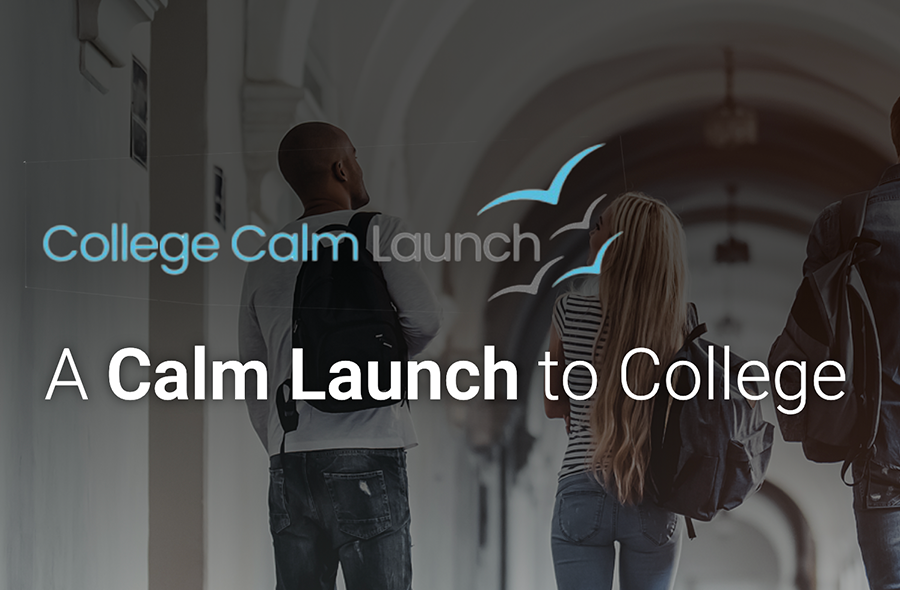Life is Full of Transitions.
As an educational consultant and school counselor, I have come to realize that a student’s life is filled with numerous transitions. Each season in their academic journey presents new challenges, goals, and opportunities for growth. From developing executive functioning skills in the early years to finding a healthy balance between extracurricular activities and academic rigor, and supporting students through the college application process, I have gained a great deal of knowledge about how to effectively support students.
But, I recently realized that perhaps the most overlooked challenge is the transition from high school to college. The learning that happens in the first 6 months of college is steep. As a society, we often believe that once a student is accepted into college and pays the deposit, they are all set. The reality is that things end up being much more complicated than expected.
What I have learned is this: Young people need support with taking the first step during transitions.
A Calm Launch to College:
Just because they are 18 doesn’t mean they know how to “adult!”
Over the last decade, as an educational consultant supporting students in the college research and application process, I have found that most teens struggle with the initial steps in any transition. However, when we can break it down into manageable parts, equip them with the necessary knowledge, and support them in developing the skills, we empower them with the knowledge they need to make good decisions.
So I had this idea.
I began asking my students and families about their transition to college, and I realized something was missing. Students felt ready for college, meaning they were academically strong and had outgrown their high school. However, their “launch” was somewhat turbulent. They did not seem to understand the differences between college and high school. Many felt underprepared and overwhelmed in the first semester. It got me thinking. What do students really need to be successful in their first year of college? What changes do they go through? What challenges do they face?
Through my research and experiences, I determined that students often struggle in many of the following areas:
- Building meaningful relationships from the start
- Adapting to dorm living and acclimating to a new environment
- Managing time and staying organized
- Meeting the pace and expectations of their classes
- Building connections to lay the foundation for their future career
Most of the resources students need are on campus, but they are not accessing them.
The “Headwinds” They Face:
College is an entirely different culture that requires a new set of skills. If students don’t recognize this, it’s as if they are fighting an invisible headwind throughout their first year.
Here are just some of the differences from high school to college:
| High School | College | |
| Time Management | All students’ school days begin and end at the same time | Classes meet between once & three times per week & schedule |
| Personal Academic Responsibility | Your parents help monitor & can connect with teachers You have daily reminders of when work is due from teachers You have many assignments & homework that tell you how you are doing in class |
You are responsible for contacting professors & academic resources You are responsible for all of your work & due dates Your midterm exam or papers are one month into the semester and are the first feedback you receive |
| Preparation for Class | Teachers often explain the readings & concepts | You will be expected to understand most of what you read before class begins & professors build from their with their lecture |
| Analysis | Demonstrating that you understand the readings is often good enough | Comprehension is only the beginning. You will compare, analyze & evaluate text & generate new ideas that apply what you know |
| Faculty | Teachers are skilled in the area of teaching | Professors are often experts in their field, but not trained in teaching |
| Social Environment | You most likely grew up with the students in your classes, and are from the same area | Students are from everywhere with varying backgrounds & experiences |
| Building Connections | You see teachers/faculty every day, they work with you to build meaningful connections. Small class sizes. | You must actively seek out professors, faculty & resources. There may be upwards of 100 students in your classes |
(Resources: “How to College by Andrea Malkin Brenner & Laura Hope Schwartz” College Success, by Amy Baldwin)
The “Tailwind” They Need:
That’s why I developed A Calm Launch to College to support first-year students in navigating their college transition. The first year of college can be stressful, but it doesn’t have to be if you have a trusted advisor to help you develop a plan and make thoughtful decisions based on your goals. It gives students the boost they need to tackle their first year with confidence.
The Launch Curriculum supports students through the five adjustments while providing one-on-one coaching from a trusted advisor to help them navigate the transition to college life.
If you have a student heading off to college in the fall and would like to learn more, join me for a free webinar. “College Unpacked: 5 Adjustments Every College Student Experiences & How You Can Help.” Click here to register.
Resources:
Levine, Madeline. Ready or Not: Preparing Our Kids to Thrive in an Uncertain and Rapidly Changing World. Harper, 2020.
Brenner, Andrea Malkin, and Lara Schwartz. How to College: What to Know Before You Go (and When You’re There). St. Martin’s Griffin, 2019.
García, Héctor, and Francesc Miralles. Ikigai: The Japanese Secret to a Long and Happy Life. Translated by Heather Cleary, Penguin Books, 2017.
Baldwin, Amy. College Success. OpenStax, 2020.




